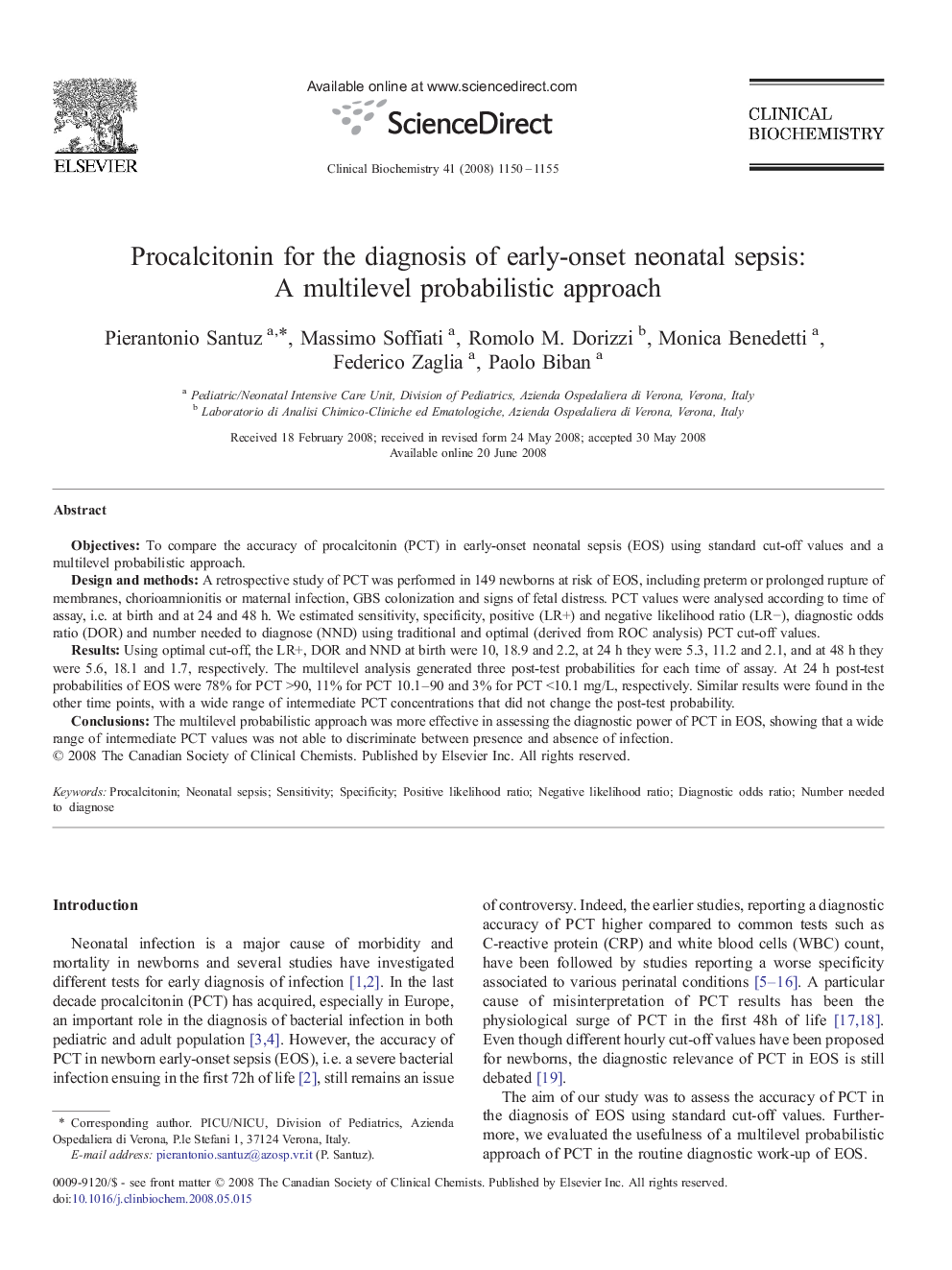| Article ID | Journal | Published Year | Pages | File Type |
|---|---|---|---|---|
| 1971358 | Clinical Biochemistry | 2008 | 6 Pages |
ObjectivesTo compare the accuracy of procalcitonin (PCT) in early-onset neonatal sepsis (EOS) using standard cut-off values and a multilevel probabilistic approach.Design and methodsA retrospective study of PCT was performed in 149 newborns at risk of EOS, including preterm or prolonged rupture of membranes, chorioamnionitis or maternal infection, GBS colonization and signs of fetal distress. PCT values were analysed according to time of assay, i.e. at birth and at 24 and 48 h. We estimated sensitivity, specificity, positive (LR+) and negative likelihood ratio (LR−), diagnostic odds ratio (DOR) and number needed to diagnose (NND) using traditional and optimal (derived from ROC analysis) PCT cut-off values.ResultsUsing optimal cut-off, the LR+, DOR and NND at birth were 10, 18.9 and 2.2, at 24 h they were 5.3, 11.2 and 2.1, and at 48 h they were 5.6, 18.1 and 1.7, respectively. The multilevel analysis generated three post-test probabilities for each time of assay. At 24 h post-test probabilities of EOS were 78% for PCT >90, 11% for PCT 10.1–90 and 3% for PCT <10.1 mg/L, respectively. Similar results were found in the other time points, with a wide range of intermediate PCT concentrations that did not change the post-test probability.ConclusionsThe multilevel probabilistic approach was more effective in assessing the diagnostic power of PCT in EOS, showing that a wide range of intermediate PCT values was not able to discriminate between presence and absence of infection.
